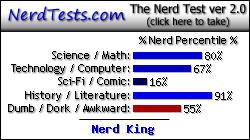The controller treats each drive as a stand-alone disk, therefore each drive is an independent logical drive. Concatenation does not provide data redundancy.
Concatenation or spanning of disks is not one of the numbered RAID levels, but it is a popular method for combining multiple physical disk drives into a single virtual disk. It provides no data redundancy. As the name implies, disks are merely concatenated together, end to beginning, so they appear to be a single large disk.
Concatenation may be thought of as the inverse of partitioning. Whereas partitioning takes one physical drive and creates two or more logical drives, concatenation uses two or more physical drives to create one logical drive.
In that it consists of an array of independent disks, it can be thought of as a distant relative of RAID. Concatenation is sometimes used to turn several odd-sized drives into one larger useful drive, which cannot be done with RAID 0. For example, JBOD ("just a bunch of disks") could combine 3 GB, 15 GB, 5.5 GB, and 12 GB drives into a logical drive at 35.5 GB, which is often more useful than the individual drives separately.
In the diagram to the right, data are concatenated from the end of disk 0 (block A63) to the beginning of disk 1 (block A64); end of disk 1 (block A91) to the beginning of disk 2 (block A92). If RAID 0 were used, then disk 0 and disk 2 would be truncated to 28 blocks, the size of the smallest disk in the array (disk 1) for a total size of 84 blocks.
Some RAID controllers use JBOD to refer to configuring drives without RAID features. Each drive shows up separately in the OS. This JBOD is not the same as concatenation.
Many Linux distributions use the terms "linear mode" or "append mode". The Mac OS X 10.4 implementation – called a "Concatenated Disk Set" – does not leave the user with any usable data on the remaining drives if one drive fails in a concatenated disk set, although the disks otherwise operate as described above.
Concatenation is one of the uses of the Logical Volume Manager in Linux, which can be used to create virtual drives spanning multiple physical drives and/or partitions.
Microsoft's Windows Home Server employs drive extender technology, whereby an array of independent disks (JBOD) are combined by the OS to form a single pool of available storage. This storage is presented to the user as a single set of network shares. Drive extender technology expands on the normal features of concatenation by providing data redundancy through software – a shared folder can be marked for duplication, which signals to the OS that a copy of the data should be kept on multiple physical disks, whilst the user will only ever see a single instance of their data.[1]
The ZFS combined filesystem and RAID software does not support this mode for pool configuration, when disks are added to a storage pool (even if they are of differning sizes) they are always in a (dynamic) stripe. When used in the context of ZFS the term JBOD refers to seeing the drives/luns without a hardware (or other software) RAID.
Friday, July 31, 2009
Concatenation (SPAN)
Source
Subscribe to:
Post Comments (Atom)




 LibreOffice
LibreOffice Firefox
Firefox
No comments:
Post a Comment